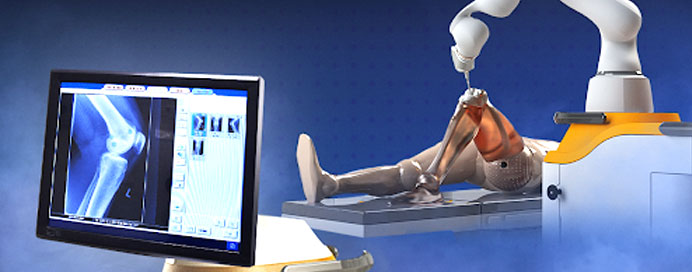Services / Dr. Ravi Bhanushali

Robotic knee joint replacement, also known as robot-assisted knee arthroplasty, is an advanced surgical technique that combines computer navigation and robotic technology to assist orthopedic surgeons in performing knee replacement surgery with greater precision and accuracy.
Here’s an overview of robotic knee joint replacement:
Indications: Robotic knee joint replacement is indicated for individuals with severe knee arthritis or other degenerative conditions that cause significant pain, stiffness, and functional impairment. Candidates for robotic knee replacement typically have failed conservative treatments and may benefit from the enhanced precision offered by robotic-assisted surgery.
Preparation: Before the surgery, patients undergo a thorough evaluation, including imaging studies such as X-rays, CT scans, or MRI to assess the condition of the knee joint and surrounding structures. The data from these imaging studies are used to create a personalized surgical plan for each patient.
Robotic Technology:
Recovery and Rehabilitation:
